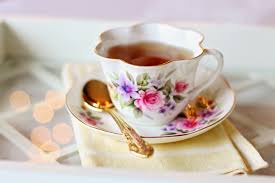We all have our favorite books, movies and things to do when the weather and the seasons change. When winter hits, we like to go skiing or hole up at home with a good book, and the spring is for hiking and spending time in the sun. These habits make it easy to get stuck in an endless cycle of “What do you want to do?” with friends and partners, but seasonal activities are more than just the things we get into the habit of doing during the winter or spring. Try something new this spring by hosting a garden party or enjoy some spring tea.
Living in the United States means tea isn’t as large of a cultural staple as in other countries, so preparing a great spring tea can be hard, but it also means that the pressure to create perfection isn’t there. Planning for tea is much easier than many of us actually expect.
First, pick a place. Tea is traditionally a warm drink, so having someplace close by to prepare the tea is necessary. But if you want to put your own twist on a traditional tea party, serve your tea iced. Iced or hot, backyards or gardens are a fun place to celebrate the season and provide a pretty background for your party. After you’ve decided where you want to have tea, invite some friends.
Most planning is done in advance or centers around the number of people invited to the event. Once your guests are invited and the dress code outlined (afternoon tea is a more casual affair, but guests are still usually expected to dress business casual) start organizing your party supplies. Tea can be a relaxed moment to catch up with close friends or a more elaborate affair, but some basics you’ll need are tea cups or mugs, a kettle, tea pot, food items, dishes, sugar, milk and other dressings or sweeteners.
There are two options when it comes to choosing a tea variety: breakfast or afternoon teas. Breakfast teas are stronger, dark and go well with milk. These teas are usually served in the morning to wake up the mind and energize the body. English breakfast and Earl Grey are examples of breakfast teas. Afternoon teas are lighter and usually served with an afternoon snack. Darjeeling and Chamomile are popular afternoon teas. They’re commonly paired with sweets, scones or sandwiches. For a spring tea, an afternoon tea would be easier to work with because they pair well with a wider variety of foods.
Scones are a popular tea pairing because they can be sweet or savory, giving your guests the opportunity to choose which suits them better at that time. Tea can also be specifically sweet or savory, depending on whether or not you want to serve finger sandwiches or tea cakes, both of which are also common tea foods. For the ambitious baker, Victoria sponge cake is often paired with afternoon tea, but those looking for a simpler snack can serve cucumber or ham and mustard sandwiches.
Since this is the United States, there isn’t a lot of pressure when it comes to presentation or tea etiquette. One tea serving basic to remember for a more authentic tea party feel is that the host pours tea for all guests, one at a time and hands the cup directly to the recipient. For those participating in the service, don’t put your pinky up. This is just something television and books have been telling people to do, but ultimately it’s your party and you can do whatever you’d like.
Outside or in, spring tea is a great way to celebrate the season. Indulge your inner anglophile and host a tea party this spring or book yourself and your friends a table at one of the Grand America Hotel’s afternoon tea sessions.


